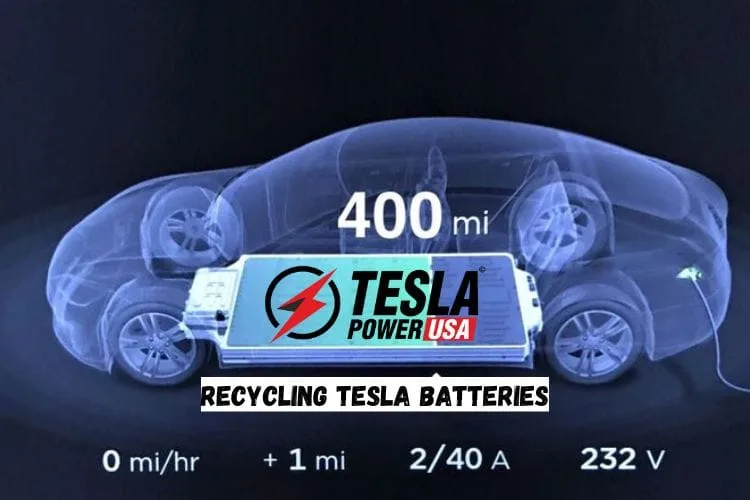In the world of electric vehicles, Tesla has been a trailblazer, and with the increasing prevalence of its cars, the question of what happens to their batteries at the end of their life has become a topic of great interest. Specifically, are Tesla batteries 100% recyclable?
The Components of Tesla Batteries
Tesla batteries, like most lithium – ion batteries, are composed of several key components. The cathode contains materials such as lithium, cobalt, nickel, and manganese. The anode is typically made of graphite. There is also an electrolyte, which is often a liquid or gel – like substance that allows the flow of ions between the cathode and anode. Additionally, the battery pack has a casing, usually made of metal and plastic, to house and protect these components.
Recycling of Battery Components
- Metals in the Cathode and Anode
- Lithium, Cobalt, Nickel, and Manganese: These valuable metals can be recycled. Recycling processes for these metals often involve hydrometallurgical and pyrometallurgical methods. Hydrometallurgical recycling uses chemical solutions to dissolve the metals from the battery components. Specialized reactors are used in this process. For example, acids are used to dissolve the cathode materials in a controlled environment. After dissolution, the metals are separated through precipitation and filtration steps. Pyrometallurgical recycling, on the other hand, involves heating the battery materials in furnaces at high temperatures. The different metals can be separated based on their melting points. High – temperature furnaces are essential equipment in this method. The recovered lithium can be reused in the production of new batteries, while cobalt and nickel are also highly sought – after for battery manufacturing and other industrial applications.
- Graphite from the Anode: Graphite can also be recycled. Mechanical separation techniques are often used initially to separate the graphite from other components. Shredders are used to break down the battery into smaller pieces, making it easier to isolate the graphite. After separation, the graphite can be purified and potentially reused in anode manufacturing or other applications where graphite is required.
- Electrolyte Recycling
- Recycling the electrolyte is more challenging. The electrolyte contains various chemical compounds, and some of them are toxic. However, efforts are being made to recycle it. Some recycling methods involve distillation processes to separate the different components of the electrolyte. Specialized distillation equipment is used to heat the electrolyte to specific temperatures, allowing the separation of volatile components. The recovered chemicals can then be re – processed and potentially reused, although this is still an area of ongoing research and development.
- Casing Recycling
- The metal and plastic parts of the battery casing are relatively easier to recycle. Metal casings can be recycled using traditional metal recycling methods. Shredders break down the casings into smaller pieces, and then magnetic and electrostatic separators are used to separate the metal from other materials. The separated metal can be melted down and reformed into new products. Plastic parts can also be recycled. They are sorted based on the type of plastic (using techniques like density – based separation) and then processed into new plastic products or used as feedstock for the production of other materials.
The Reality of 100% Recycling
While significant progress has been made in recycling Tesla batteries, it is not currently possible to achieve 100% recycling. There are several reasons for this. Some of the chemical compounds in the battery, especially in the electrolyte, are difficult to fully recycle and reuse. Additionally, the recycling processes themselves are not always 100% efficient. There may be some losses during the separation and purification steps of the recycling process. However, Tesla and the broader battery recycling industry are constantly working on improving recycling technologies and processes to get closer to the goal of 100% recyclability.
In conclusion, Tesla batteries are highly recyclable, with a large portion of their components being able to be recovered and reused. The recycling equipment used in the process plays a crucial role in separating and purifying these valuable materials. Although 100% recyclability has not been achieved yet, the continuous innovation in recycling technology gives hope for a more sustainable future for electric vehicle batteries.


Leave a Reply